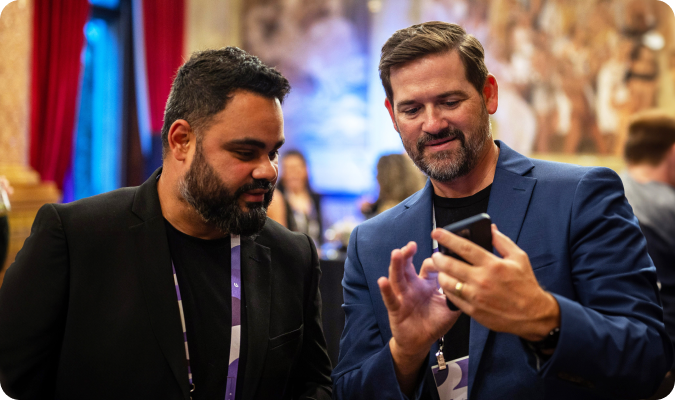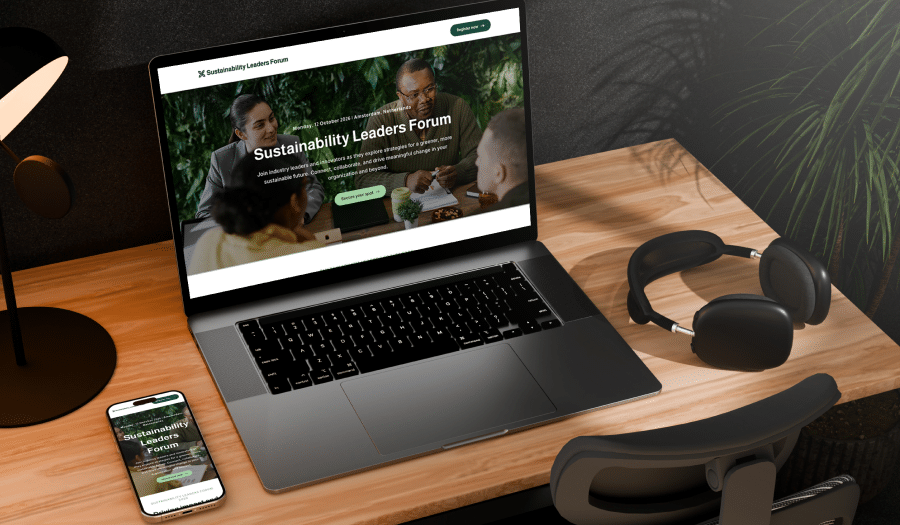
Events are a powerful tool for spreading brand awareness.
In fact, 64% of companies say brand awareness is their primary reason for hosting events. This EventsAir guide will walk you through the essentials of event branding and provide a step-by-step guide to creating a memorable identity.
We’ll also introduce how EventsAir can make this process smoother and more effective.
What is event branding?
Event branding is the process of creating a unique identity for your event.
It’s more than just a logo or a tagline—it’s about conveying the essence, values, and goals of your event through visuals, messaging, and experiences. Effective event branding makes your event recognizable and memorable while also differentiating it from other events in the space.
TED events are great examples of strong branding.
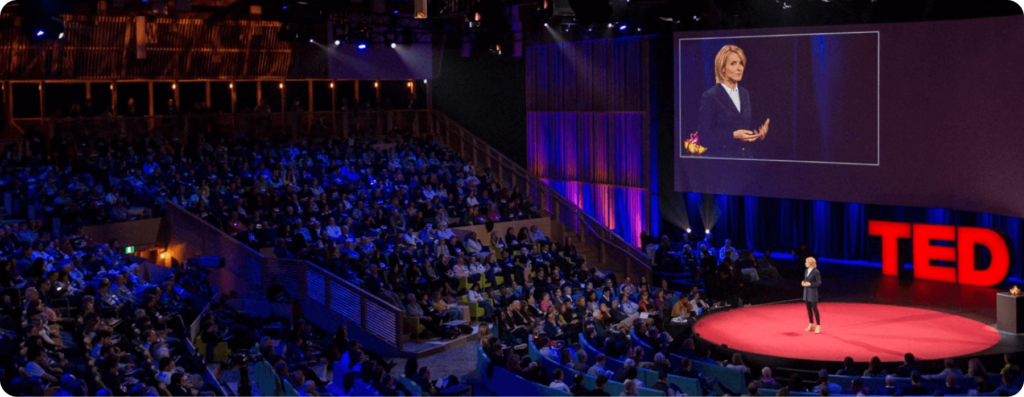
When you see that red letting in the backdrop of a minimally decorated stage, you know exactly what you’ll get—a 10-20 minute inspiring talk from a world-renowned speaker.
Why is it important to create a memorable event brand?
A memorable event brand is important because it:
- Attracts attendees: A strong brand can pique interest and draw in your target audience.
- Builds trust: Consistent branding builds credibility and trust with your audience.
- Enhances engagement: A cohesive brand experience can increase attendee engagement and satisfaction.
How to create a cohesive event brand
1. Define your event’s purpose
Before you can build a brand, you need a strong foundation. We recommend holding off on details like voice and color palettes (yes, we know that’s the fun part!) until you understand why you’re hosting the event.
Sit down with your team and relevant stakeholders to come up with strong answers to the following:
- What is the primary goal of your event?
- What problem does your event solve for attendees?
- What makes your event unique compared to similar events?
- What are the key benefits attendees will gain from your event?
- How do you want your event to be perceived?
2. Identify your target audience
Next, think about who your event is for.
If you’ve hosted similar events in the past, historical data can be a goldmine. For example, with a platform like EventsAir, you can access detailed attendee profiles for past events and use that information to inform your target audience about this event.
In addition, you can track details like:
- Referral sources
- Demographics
- Interests
- Engagement level
All of these data points can inform your audience profile for future events.
3. Develop your brand strategy
Your brand strategy includes three important elements:
- Your event’s mission statement
- Your event’s values
- Your event’s personality
First, pin down a mission statement that captures the meat of your answers in step one. For example, Glastonbury’s mission statement is “to encourage and stimulate youth culture from around the world in all its forms”.
Next up, work out your event’s values—these are the guiding principles that shape how you want to run your event. Some common values in the event industry include “sustainability,” “diversity,” and “inclusivity.”
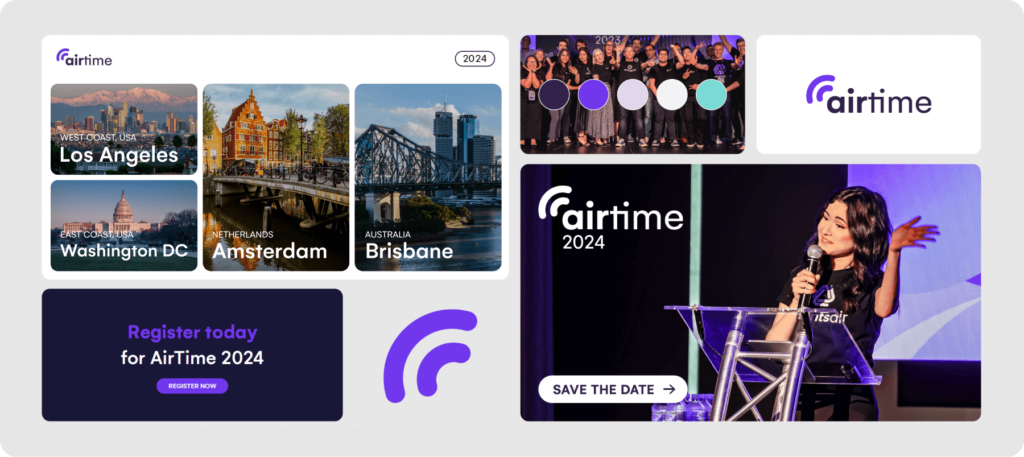
Finally, consider your event’s personality. This is the overall vibe of your event. TED’s personality is subdued, intellectual, and thought-provoking. EventsAir’s AirTime is known for its high-quality content, connection, and engagement. Choose a personality that supports your mission and values.
4. Design visual brand elements
Now, it’s time for the visuals. This topic could fill an entire article, but we’ll stick with the key points for now.
Your visual brand is one of the main ways people interact with and understand your underlying, intangible branding. At a high level, both sides of your brand should be consistent, recognizable, and symbiotic.
There are a few specific visual elements that are especially important to get right:
- Your event’s color palette
- Your event’s logo
- Your event’s typography
- Your event’s imagery style
If you don’t have design experience, we highly recommend working with a professional designer with event experience. The end goal is to create a set of branding guidelines that you can distribute to everyone who will be creating external-facing materials.
5. Create branded materials
Speaking of… once your brand is established, you’ll need to create all the necessary materials for your event.
This includes things like:
- Registration page
- Email invitations
- Social media graphics
- Badges and signage
- Presentation slides
- Event program or agenda
- Printed handouts or promotional materials
All of this is easier if you use an event management platform like EventsAir. Why? We offer built-in branding tools that allow you to define your visual brand once and then instantly apply it to all assets you create with the platform.
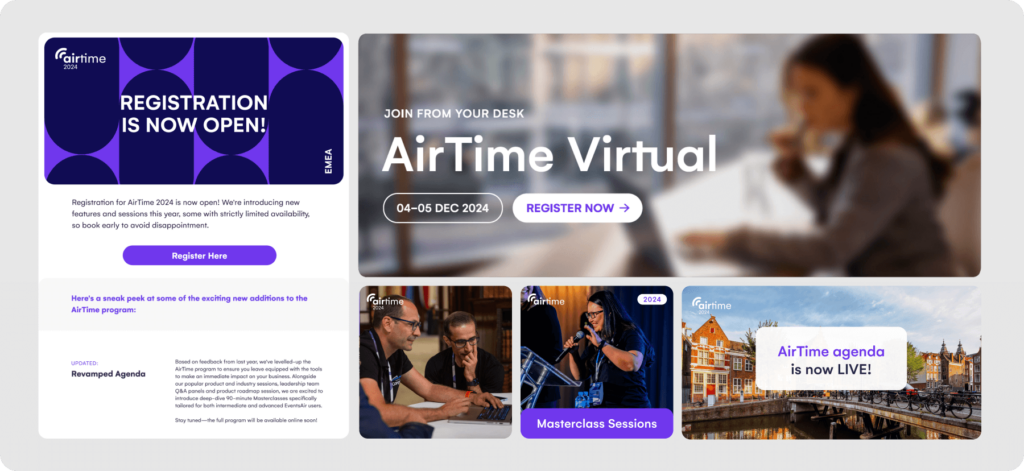
This includes a wide range of EventsAir features, like:
- Event websites
- Attendee, organizer, and presenter apps
- Agendas
- Registration pages
- Billing portals
- Emails and other communications
- Badges
We also offer a range of templates to create an instant visual identity for your event. Just remember, consistency is key when it comes to branding! Make sure all of these materials align with your established visual brand guidelines.
6. Implement an approval workflow
Finally, implement a clear review and approval workflow for all branded materials you create. This doesn’t need to be anything too formal. However, in our experience, it’s best to designate at least one person to review all materials before publication or distribution. Test, test, and re-test – you want to make sure you are always putting your best foot forward – especially at launch.
Event brands involve quite a few elements. It can be a lot for people to keep track of in addition to their other responsibilities.
Ready to elevate your event brand?
Creating a memorable event brand is essential for attracting attendees, building trust, and enhancing engagement. By following the steps in this guide and leveraging EventsAir’s branding features, you can create a cohesive and compelling brand identity that’s automatically applied to your entire event.
Ready to simplify event planning and management? Contact sales to schedule a demo and check out our customizable plans.
Best Practice | Event Marketing
See EventsAir in action
Discover why 12,000+ event professionals trust EventsAir to deliver effortless events, every time.
